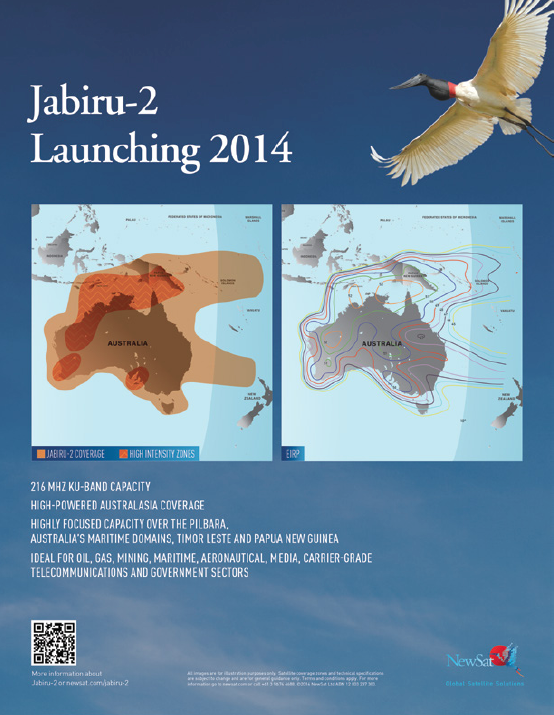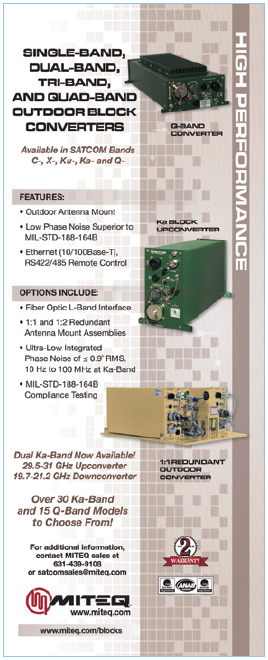McMurdo Group’s Search... Technologies + More Prove To Be Real Life Savers
A new global leader in end-to-end search and rescue (SAR) and maritime domain awareness (MDA) solutions has debuted—McMurdo Group.

Comprised of Orolia’s former Positioning, Tracking and Monitoring Division1, McMurdo Group combines proven brands Boatracs, Kannad, McMurdo and Techno-Sciences, Inc. into the industry’s first, single-vendor provider of end-to-end life-saving and tracking solutions including distress beacons, satellite connectivity infrastructure, monitoring/positioning software and emergency response management.
“The formation of McMurdo Group is an opportunity to lead, simplify and educate a fragmented, complex market with a unified strategy and an expansive solutions offering unparalleled in the industry today,” said Jean-Yves Courtois, CEO of McMurdo Group. “The end result will be the acceleration of more effective and innovative SAR and MDA solutions that will create benefits for our customers today and in the future.”
With more than 140 years of collective experience in emergency preparedness, vessel management and rescue operations, McMurdo Group will focus on three key strategic areas:
• Search and Rescue— improving the rescue chain to further expedite recovery times
• Maritime Domain Awareness—driving convergence of fleet/vessel management, intrusion detection and coastal surveillance solutions to improve operations and enhance security
• Technology Partner Solutions—integrating technology, component and software platforms into third-party solutions to extend SAR and MDA systems into new markets and geographies
McMurdo Group’ Search + Rescue currently manufactures nearly 25 percent of the world’s emergency beacons, which are used by major aviation, marine and military customers including Airbus, Boeing, the U.S. Coast Guard, the British Royal Navy and several government agencies.
The group recently announced its intention to acquire Techno-Sciences Inc. (TSi), one of the world’s top providers of ground station infrastructure for the International COSPAS-SARSAT satellite-based search and rescue system, which has helped save nearly 35,000 lives since 1982.4
In a typical satellite-based search and rescue scenario, ships, aircraft or individuals transmit distress signals from an emergency location beacon via satellite to a fixed ground receiving station.
The ground receiving station calculates the location of the emergency and generates an alert for the appropriate rescue authorities.
Today, the beacon-to-alert process can take several minutes or longer. McMurdo Group’s involvement in the development and implementation of the next-generation COSPAS-SARSAT system (MEOSAR) will reduce this time to a few seconds.
“McMurdo Group will soon be able to provide the entire COSPAS-SARSAT ecosystem—from the beacons to satellite ground station infrastructure to mission and rescue control center software—resulting in seamless integration and enhanced performance between the various SAR ecosystem components,” said Jeremy Harrison, President, McMurdo Group SAR Solutions. “We are also very excited about the role we will play in delivering an end-to-end next-generation MEOSAR solution to our customers.”
The current fragmentation of environmental, security, safety and SAR situational awareness systems provides an opportunity for convergence. McMurdo Group plans to contribute to this effort by integrating its broad range of MDA, SAR and Automatic Identification System (AIS) technologies into solutions that streamline operations and protect assets.
For example, McMurdo Group’s fleet/vessel management software, currently used on thousands of vessels and in five of the six top inland waterway transportation companies in the U.S., includes AIS beacon and man overboard (MOB) functionality.
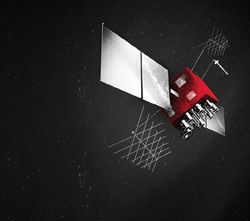
McMurdo Group also provides an offshore safety/security solution used to manage the world’s longest contiguous coastal surveillance system (3,000km) and maintain simultaneous AIS tracking on up to 60,000 vessels.
Irwin Rodrigues, President, McMurdo Group MDA and Technology Partner Solutions, said, “By having a common software platform, for example, the entire user experience becomes less complex resulting in unified interfaces, better adoption levels and reduced costs. Customer support will also be key to provide the proper service levels required for these mission critical applications.”
Through its Technology Partner Solution strategy, McMurdo Group will offer customized products and expertise in hardware/software product design, development, engineering and manufacturing to partners.
McMurdo Group’s specialized industry knowledge will be critical as partners integrate SAR and MDA functionality into their current and future offerings. A large provider of satellite systems and services, for example, partners today with McMurdo Group to design and supply specialized beacons to monitor fishing fleets in over 70 countries.
“Whether it is a beacon, satellite infrastructure or monitoring software, we will have a solution,” said Jean-Yves Courtois, CEO McMurdo Group. “This will allow our existing customers and partners as well as those in new markets or geographies to confidently build solutions for remote or high-risk environments knowing they are backed by the intelligence and technology of the SAR and MDA industry leader.”
For more information about McMurdo Group, please visit http://www.mcmurdogroup.com.
* * * * * * * * *
C2SAT + IAI—Into Stabilization
C2SAT + IAI—Into Stabilization C2SAT has signed a major contract with Israel Aerospace Industries (IAI) for the delivery of 1-meter stabilized antennas based on the company’s new P9 platform.

The market has embraced the new 4-axes stabilized platform for VSAT antennas, the P9, a small pedestal for dishes up to 1.3 meters. While the larger P7 platform has demonstrated the benefits of C2SATs patented 4-axis technology in Ku-, X- and C-band applications, the market has requested a smaller platform for the majority of often crowded Navy and Coast Guard vessels.
In August of 2013, Israel Aerospace Industries (IAI) signed a three year contract with C2SAT for delivery of 1-meter stabilized VSAT antennas based on the P9 platform.
The Security and Defence branch of Indra has, for several years, been using C2SATs P7 platform to support an X-band application used by the Spanish Navy. Indra supplies its own X-band solution for high performance redundancy integrated with stabilized platforms and radomes from C2SAT.
The BAM (Buque Action Maritima) vessels are 94 meters in length and 2575 tons in displacement and are modern offshore patrol vessels with mission versatility operated by the Spanish Navy. Photo courtesy of Navantia.
Download the product datasheet and read more about C2SAT’s OEM products at http://www.c2sat.com/products
* * * * * * * * *
Airbus Group—Group Dynamics
Taking off into the New Year, the EADS group has been rebranded as “Airbus Group” and unites all the company’s activities under a single and strong brand—Airbus Group also renames two of its three Divisions. Going forward, the Group is home to:
—Airbus, focusing on commercial aircraft activities
—Airbus Defence and Space, integrating the Group’s defence and space activities from Cassidian, Astrium and Airbus Military
—Airbus Helicopters, comprising all commercial and military helicopter activities
Joining forces under the strong Airbus brand gives all our operations and employees the thrust and lift to capture global markets.
In the course of this rebranding, the GEO-Information Division of Astrium Services becomes the program line “Geo-Intelligence,” part of the “Communication, Intelligence & Security” business line of Airbus Defence and Space. This new branding will neither impact the way that this part of the company operates, nor its legal structure, or its customer’s points of contact into the organization. Customers can be assured that, while they will see a logo change, they will continue to receive the level of service they are used to.
Furthermore, the Airbus Group is launching procedures to change the legal form of its holding by 2015: Once renamed, Airbus Group N.V. shall turn into a European Company, Airbus Group SE (Societas Europaea) which will continue to be registered in the Netherlands.
This legal conversion has no impact on the organization or operations of the Group. Both the legal name change into Airbus Group N.V. and the conversion of the legal form into SE are subject to approval of the Annual General Meeting (AGM) of Shareholders: while adoption of the new name is expected at the AGM in May 2014, the legal conversion is targeted for approval in May 2015.
Airbus Geo-Intelligence infosite is located at: http://www.astrium-geo.com/
* * * * * * * * *
Thales Alenia Space + Arianespace—Dual Mission Includes Italian + French Defense Payloads
The French-Italian dual (defense-security) broadband telecommunications satellite Athena-Fidus was successfully launched on February 6 by Arianespace from the Guiana Space Center, Europe’s spaceport in Kourou, French Guiana, using an Ariane 5 launch vehicle.
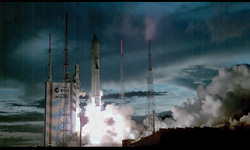
The launch of Arianespace’ VA217 mission. Photo courtesy of Arianespace.
Thales Alenia Space is the program prime contractor on behalf of the French and Italian space agencies, CNES and ASI respectively, and the French and Italian defense ministries (procurement agency DGA for France and Segredifesa for Italy).
The Athena-Fidus satellite operates in the EHF and Ka bands, and features the latest civil telecom standards, DVB-RCS and DVB-S2. It will provide services to the French and Italian defense ministries, as well as to these countries’ security organizations (homeland security, police, firefighters and other civilian organizations).
Built on a Spacebus 4000 platform, the satellite weighed over 3,000kg at launch and offers a design life exceeding 15 years Athena-Fidus marks the first European collaboration (Franco-Italian) on a military/dual space telecom program.
Arianespace opened a busy year of mission activity in 2014 with another Ariane 5 success today that added key numbers to the company’s commercial launch services track record.
This 250th launch performed by Arianespace lifted off from the Spaceport in French Guiana at 6:30 p.m. local time on February 6th, delivering a dual-satellite payload into geostationary transfer orbit: ABS-2 for global satellite operator ABS, and Athena-Fidus for the defense/homeland security needs of France and Italy. The mission’s duration was just over 32 minutes.
Ariane 5 provided another highly accurate performance, with the following estimated orbital parameters at the injection of its cryogenic upper stage:
– Perigee: 244.4 km. for a target of 244.4 km
– Apogee: 35,937 km. for a target of 35,934 km
– Inclination: 6.00 deg. for a target of 6.00 degrees
Released first during Flight VA217 was the ABS-2 relay spacecraft, which had a mass at liftoff of approximately 6,330 kg. and was the first satellite for which ABS directly awarded the launch contract—selecting Arianespace. As a result, Arianespace continued its support of new and developing communications market entrants, with more than 80 percent of satellite telecommunications operators selecting the company for their first launch milestones–placing the emphasis on quality, reliability and availability.
ABS-2 was produced by SSL (Space Systems/Loral) and will deliver optimized telecommunications, direct-to-home (DTH) broadcasting, multimedia, and data transmission services for Africa, Asia Pacific, Europe, the Middle East, Russia and the Commonwealth of Independent States (CIS). Its operational geostationary orbital slot will be at 75 degrees East.
Deployed at the conclusion of Flight VA217 was the Athena-Fidus payload–the 50th satellite launched by Arianespace for European defense purposes. Thales Alenia Space built the 3,080-kg.-category spacecraft as prime contractor to customer Telespazio, working on behalf of the French CNES and Italian ASI space agencies, as well as the French DGA and Italian Segredifesa defense ministry organizations.
Athena-Fidus is to deliver telecommunications services to both armed forces and homeland security units in France and Italy, operated from a geostationary orbit position of 38 degrees East.
In orbiting Athena-Fidus, Arianespace opened a key year at the service of European institutions. Included in the company’s planned 2014 mission manifest are flights for the European Commission’s Galileo and Copernicus flagship programs, along with launches with the European Space Agency’s final Automated Transfer Vehicle and the Intermediate eXperimental Vehicle (IXV) atmospheric reentry demonstrator.
This launch was the 216th flight of an Ariane-series vehicle. It marked the 72nd Ariane 5 mission overall, and the 58th consecutive success for Arianespace’s workhorse heavy-lift vehicle.
The next Arianespace mission is planned for March 7, using another Ariane 5 to orbit the ASTRA 5B and Amazonas 4A relay satellites. Amazonas 4A–built by Orbital Sciences Corporation for Hispasat–arrived in French Guiana this week aboard a cargo jetliner.
Ariane 5 has been successfully launched from Kourou, French Guiana, for the 58th time in a row, once again confirming the reliability of the European launcher developed and built by Airbus Defence and Space, the world’s number two space technology company.
This launch brings Airbus Defence and Space one step closer to delivering its Comcept system. The Comcept system will allow the French armed forces to join their counterparts from the United States and the United Arab Emirates (UAE) in a very select group of armed forces with military Ka-band networks.
Awarded by the French defence procurement agency DGA, the development of Comcept is set to draw on the additional Ka-broadband satellite capability brought to the French armed forces.
The required performance for this, the 216th Ariane flight—for which Arianespace conducted launch operations—was 10,214 kg in geostationary transfer orbit, including 9,410 kg for the two satellites, ABS2 and Athena-Fidus, on board. The remaining mass was for SYLDA dual launch system and satellite integration hardware.
Airbus Defence and Space has unique expertise in new Ka-band satellite communications networks, acquired notably through its work on the UAE’s Yahsat system and Eutelsat’s KA-SAT satellite. The Comcept contract, which will run for 17 years, will be compatible with future commercial satellite networks operating in Ka-band, and will provide global coverage.
Airbus Defence and Space has been overseeing Ariane 5’s industrial network since 2003, covering more than 550 companies (more than 20 percent of them SMEs) in 12 European countries. Airbus Defence and Space also manages the entire industrial supply chain, from the manufacture of equipment and stages to the complete integration of the launcher in French Guiana, in line with the customer’s specifications.
* * * * * * * * *
Lockheed Martin—Plying The Polar Regions With WCDMA + MUOS
Lockheed Martin recently demonstrated that the U.S. Navy’s Mobile User Objective System (MUOS) satellites may help solve communication challenges in the arctic.
Now people spread over thousands of square miles could have access to more secure, reliable communications.
During company-funded tests, MUOS voice and data signals reached much farther north than previously thought, just 30 miles and 0.5 degrees of latitude shy of the North Pole.
A team demonstrated Wideband Code Division Multiple Access (WCDMA) capability using three different radios as far north as 89.5 degrees, under peak orbit conditions.
This inherent voice and data access is well beyond the 65-degree system requirement. The additional coverage comes at a time when demand is surging for dependable polar communications.
“As the arctic becomes more accessible, the U.S. and its allies need reliable communications to maintain a safe and secure presence,” said Paul Scearce, director of Military Space Advanced Programs at Lockheed Martin. “Demand for consistent voice and data services will only increase. The area is experiencing more shipping, tourism and natural resource exploration, which will also likely increase demands for search and rescue.”
The demonstrations show MUOS has an advantage over legacy satellite communications.
Dr. Amy Sun, Narrowband Advanced Programs lead at Lockheed Martin said, “We did these evaluations to explore growing arctic communication demand, yet it also highlighted the dramatic capability improvements the WCDMA architecture will provide. Using MUOS, we were able communicate from the aircraft at high latitudes, which wasn’t the case for the legacy Ultra High Frequency signal.”
Lockheed Martin performed two rounds of testing late last year aboard an L-100 aircraft, the commercial variant of the C-130 Hercules. Multi-hour flights set out from Barrow, Alaska to test transmit and receive capabilities.
Three terminal providers developing MUOS-compatible radios were on board, including the General Dynamics PRC-155 Manpack, the Harris PRC-117G Manpack and the Rockwell Collins ARC-210 V5 airborne terminal.
Anticipated shipping lanes will see full coverage 24 hours a day, with signal gradually dropping off farther north to 89.5 degrees, which can be achieved at peak orbit conditions. Airborne terminals can connect further north than sea level terminals, but at reduced durations. The Antarctic should see similar performance results. Lockheed Martin plans on evaluating MUOS signal strength there, as well.
Lockheed Martin’s MUOS infosite is accessible at http://www.lockheedmartin.com/us/products/mobile-user-objective-system--muos-.html
* * * * * * * * *
Air Force Space Command—50th Space Wing—New Antennas Added
The 50th Space Wing has earned operational acceptance for four of its remote tracking station antennas from Air Force Space Command January 29th, signaling the start of full operations for the Air Force’s newest satellite communication assets.
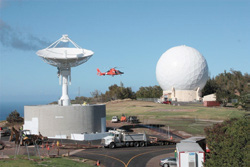
A Remote Tracking Station Block Change, or RBC, antenna is installed at Kaena Point Tracking Station in Hawai’i. Photo courtesy of USAF.
The Remote Tracking Station Block Change, or RBC antennas represent the latest telemetry, tracking and command technologies in the Air Force.
The RBC antennas work as part of the Air Force Satellite Control Network, or AFSCN, of ground stations located around the world.
These ground stations are vital to space operations because they allow satellite flyers in the Air Force’s space operations squadrons to communicate with the satellites they command and control.
“Spacecraft owners must periodically perform telemetry, tracking and commanding supports,” said Brian Bayless, the 22nd Space Operations Squadron AFSCN integration chief. “The AFSCN operations fall under 22 SOPS. The AFSCN provides access to more than 150 Department of Defense, national intelligence, civil and allied nation satellites. Now, we have four new technologically advanced systems to accomplish that mission.”
The effort to bring the RBC antennas fully online represents the first upgrade to remote tracking station antennas since Automated Remote Tracking Station 1 antennas were installed in 1987.
“We’ve earned operational acceptance for our RBCs at New Boston Air Force Station, N.H, Oakhanger, England, Guam and Kaena Point, Hawaii,” Bayless said. “They are significant upgrades to our legacy ground system.”
The new antennas offer the AFSCN a non-keyhole environment, in other words, they can track an orbiting satellite during its entire pass over a tracking station.
“The legacy antennas moved up to 87.5 degrees, but then they have to be manually rotated to 92.5 degrees and reacquire the satellite before tracking the remainder of the pass,” Bayless said. “That’s just the way the old tracking mechanism worked. With the RBC antennas, we don’t lose track of the satellite as it passes over. So, the new antenna gives us an additional five degrees of telemetry.”
U.S. government contractors built and installed the RBC antennas at a cost of approximately $25 to $35 million at each site.
“These aren’t trivial upgrades,” Bayless said. “We’ve replaced the antennas and the hardware, software and control equipment needed to operate them.”
These are just the latest AFSCN antennas to earn operational acceptance. The Air Force began installing RBC antennas at remote tracking sites back in 2004, when the first was constructed at Vandenberg Tracking Station.
“We’ve been turning over antennas sequentially at AFSCNs sites since then,” Bayless said.
Following installation, antennas are tested and operated for a matter of time before Air Force Space Command leaders deem them ready for operational acceptance.
“Operational acceptance is a basically a formal turnover of a weapon system to the command,” Bayless said. “Air Force leaders are saying, ‘you now have a top-rated system and it’s ready to move into full operational status.’”
In the RBC’s case, operational acceptance means the Air Force can take full advantage of a multitude of enhancements provided by the new antennas. They not only offer a better tracking range, they provide an 85 percent increase in redundancy and allow the AFSCN to perform in a more automated fashion.
“What RBC antennas allow us to do is automate satellite contacts,” said Lt. Col. Aaron Gibson, the 22 SOPS commander. “The AFSCN can now ingest our network tasking order schedule, build satellite contacts from that schedule, run the contacts and de-configure without a human touching a keyboard.”
Bayless said the RBC antennas also should reduce, by up to 50 percent, the time tracking stations spend preparing for a satellite pass.
Story by Scott Prater, Schriever Sentinel
* * * * * * * * *
Astrium + Airbus Group—A Name Change, But No Game Change
A new year and a new name for a major company, and what, if any, changes in the company?
Taking off into the New Year, the EADS group has been rebranded as “Airbus Group”. Uniting all its activities under a single and strong brand, Airbus Group also renames two of its three Divisions. Going forward, the Group is home to:
Airbus is now focusing on commercial aircraft activities.
Airbus Defence and Space, is integrating the Group’s defence and space activities from Cassidian, Astrium and Airbus Military.
Airbus Helicopters, is comprising all commercial and military helicopter activities.
In the course of this rebranding, the GEO-Information Division of Astrium Services becomes the program line “Geo-Intelligence”, part of the “Communication, Intelligence & Security” business line of Airbus Defence and Space.
This new branding will neither impact the way that this part of the company operates, nor its legal structure, or its customer’s points of contact into the organization. Customers can be assured that, while they will see a logo change, they will continue to receive the level of service they are used to.
Furthermore, the Airbus Group is launching procedures to change the legal form of its holding by 2015: Once renamed, Airbus Group N.V. shall turn into a European Company, Airbus Group SE (Societas Europaea) which will continue to be registered in the Netherlands.
Both the legal name change into Airbus Group N.V. and the conversion of the legal form into SE are subject to approval of the Annual General Meeting (AGM) of Shareholders: while adoption of the new name is expected at the AGM in May 2014, the legal conversion is targeted for approval in May 2015.
These steps complement the transformation process of the Group. In less than two years, the company has not only modernized its governance, broadened the shareholding structure, and united the Headquarters but also thoroughly overhauled its company strategy and launched the integration of the defense and space businesses.
Airbus Group is a global leader in aerospace, defence and related services. In 2012, the Group – comprising Airbus, Airbus Defence and Space, and Airbus Helicopters—generated revenues of 56.5 billion euro and employed a workforce of over 140,000.



